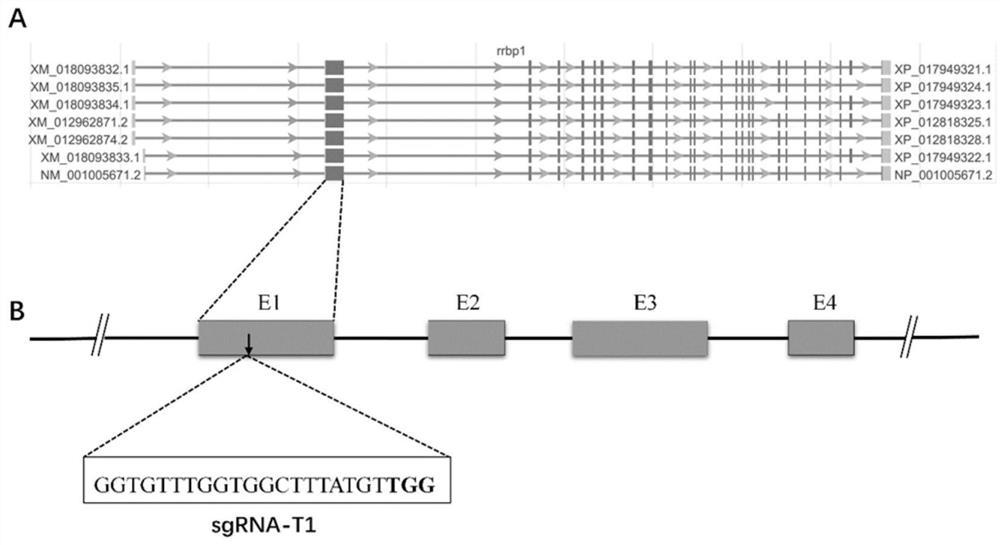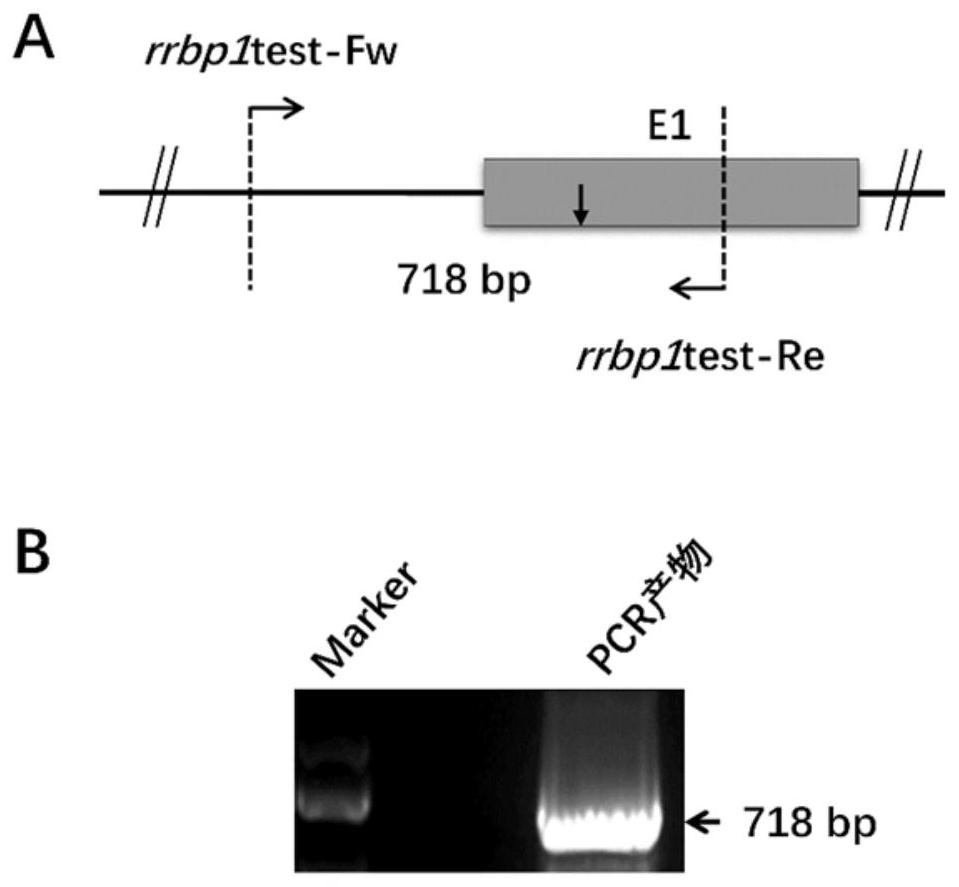Preparation method and application of a rrbp1 gene knockout tropical clawed frog model
A gene knockout and clawed frog technology, applied in the field of genetic engineering, can solve problems such as no related reports
- Summary
- Abstract
- Description
- Claims
- Application Information
AI Technical Summary
Problems solved by technology
Method used
Image
Examples
Embodiment 1
[0035] Example 1 CRISPR / Cas9 Gene Knockout Target Site Design
[0036] The genomic DNA sequence and functional domains of the rrbp1 gene of the tropical clawed frog were queried on NCBI. According to the gene editing principle of the CRISPR / Cas9 system, 10 sgRNAs were designed for the first exon (SEQ ID NO.1) of the rrbp1 gene (Table 1). For the design site of sgRNA, see figure 1 .
[0037] Table 1. Ten sgRNA sequences targeting the first exon of rrbp1
[0038]
[0039] In the DNA sequence of the above sgRNA, the sequence in bold is the PAM sequence of the target site recognized by CRISPR / Cas9.
Embodiment 2
[0040] Example 2 Construction and in vitro transcription of sgRNA expression vector
[0041] (1) The sgRNA designed in Example 1 was cloned into the pUC57-Simple-gRNA backbone vector (Addgene, #51306) to construct an sgRNA expression vector. Because the pUC57-Simple-gRNA backbone vector needs to be digested with BbsI, it is necessary to artificially add the sticky end of the BbsI restriction site to the sgRNA and its complementary sequence (add TAGG to the 5' end of the sense strand; add TAGG to the 5' end of the antisense strand) AAAC) to facilitate cloning of sgRNA into the pUC57-Simple-gRNA backbone vector. Anneal the designed sgRNA sequence with the sticky end of the BbsI restriction site and its complementary sequence as a synthetic primer to form a double-stranded DNA fragment with sticky end, and connect it to the pUC57-Simple-gRNA backbone vector digested with BbsI , and then construct the corresponding sgRNA expression vector.
[0042] Table 2 Annealing reaction sys...
Embodiment 3
[0062] The microinjection of embodiment 3 Xenopus tropicalis embryo
[0063] Open the nitrogen gas valve when the tropical clawed frog lays eggs, adjust the pressure and time, and prepare various reagents that need to be injected as needed, inject 300pg / egg according to the Cas9 protein, and inject 100pg of the sgRNA (T1-T10) obtained in Example 2 The amount per egg was injected. According to the needs, select fertilized eggs whose embryo injection period is 1-cell stage. Transfer the embryos to be injected to 0.1×MBS embryo culture medium (composed of 5×MBS (configuration method: weigh NaCl 25.9g, Hepes 11.9g, NaHCO 3 1.0g, KCl 0.4g, MgSO 4 0.5g, Ca(NO 3 ) 2 0.8g, CaCl 2 0.2g, add 800mL deionized water and mix well, adjust the pH to 7.4, set the volume of the volumetric flask to 1000mL, store it at 4°C after autoclaving and dilute it for later use), then transfer it to a glass slide with a straw, according to the injection The need to regulate the position of the em...
PUM
 Login to View More
Login to View More Abstract
Description
Claims
Application Information
 Login to View More
Login to View More - R&D
- Intellectual Property
- Life Sciences
- Materials
- Tech Scout
- Unparalleled Data Quality
- Higher Quality Content
- 60% Fewer Hallucinations
Browse by: Latest US Patents, China's latest patents, Technical Efficacy Thesaurus, Application Domain, Technology Topic, Popular Technical Reports.
© 2025 PatSnap. All rights reserved.Legal|Privacy policy|Modern Slavery Act Transparency Statement|Sitemap|About US| Contact US: help@patsnap.com



